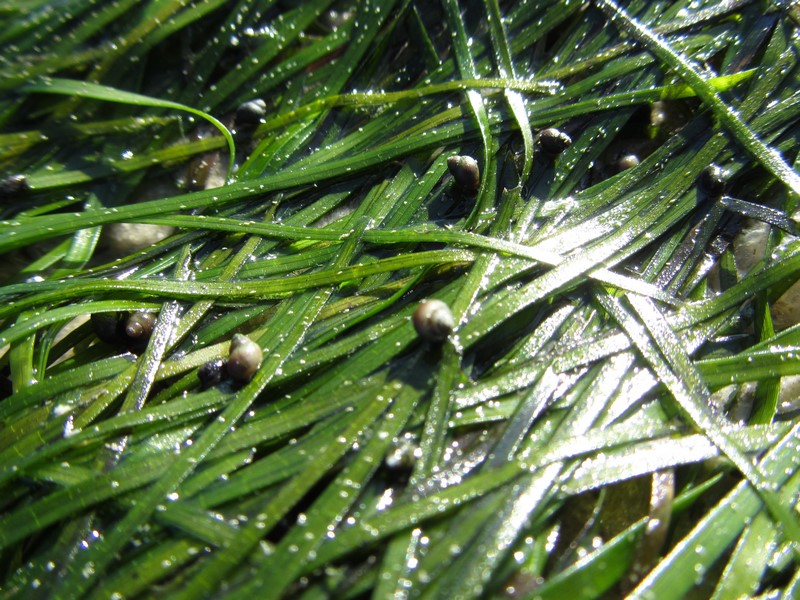
Nestled on South Africa’s west coast, Langebaan Lagoon is a breath-taking natural gem stretching across azure waters. Framed by pristine white-sand beaches and surrounded by rolling dunes and vibrant flora, this national park and marine protected area exudes a serene and tranquil atmosphere. The lagoon’s shallow and crystal-clear waters are home to an abundance of marine life, including ecologically important seagrasses. These flowering plants can thrive in seawater completely immersed and form an essential home or habitat for fish and birds. This makes Langebaan a great destination for fishing, nature lovers, and birdwatchers.
Seagrass meadows are vital ecosystems that provide numerous benefits to both marine life and humans. They serve as nursery grounds and shelter for a variety of marine species, including commercially important fish and shellfish. Additionally, seagrass habitats play a crucial role in carbon sequestration, mitigating the effects of climate change. They serve a critical function in maintaining water quality and stabilizing sediments. However, seagrasses are facing significant challenges due to human disturbance and climate change. Understanding how they adapt and respond to environmental stress is essential for their conservation and management.
In a recently published study, researchers investigated the effects of warming temperatures and algal grazing on two growth forms or morphotypes of South Africa’s main seagrass, Zostera capensis from Langebaan Lagoon. The study used an indoor aquarium to create controlled environments to simulate average summer temperatures and extreme heat conditions.

The findings revealed that both the large-leaved and small-leaved morphotypes displayed similar responses to extreme temperatures. However, the small-leaved morphotype exhibited higher rates of photosynthesis and accumulated greater amounts of carbon, nitrogen, and phenolics compared to its large-leaved counterpart. This suggests that small-leaved seagrass populations have a greater ability to store resources, indicating a potential for resilience. Interestingly, the large-leaved morphotype allocated more resources towards growth, making it more vulnerable to stressors such as from algal overgrowth or disease. On the other hand, the small-leaved morphotype appeared to prioritize resource storage, enhancing its resilience against environmental challenges.
Epiphytes, tiny algae that grow on seagrass leaves, play an important role by contributing to the overall biodiversity of seagrass ecosystems by providing microhabitats and food sources for a variety of small organisms. The study also investigated the influence of epiphyte grazing by a small snail, on seagrass response to warming. Under normal average summer conditions, grazing had a positive effect on seagrass biomass, as grazers controlled the growth of algae that compete with seagrasses for resources such as light and nutrients. However, when exposed to extreme temperatures, grazers were unable to control the rapid growth of epiphytes leading to an escalation in epiphyte biomass. This unchecked growth of algae could be harmful to seagrass health, as they can block sunlight and hinder the photosynthetic capabilities of seagrass leaves.

The study’s results have important implications for the future of seagrass ecosystems in Langebaan and beyond. As our planet continues to warm, extreme temperature events are becoming more frequent and intense. The research indicates that seagrasses are particularly vulnerable to these extreme warming episodes, that can lead to die-offs and a loss of habitat with knock-on effects on fish and bird populations.
However, there is hope. Seagrasses have exhibited abilities to acclimatise, allowing them to persist in sub-optimal and extreme temperatures. The ability of small-leaved morphotypes to store resources and raise photosynthetic rates offers a ray of hope for the resilience of seagrass populations. By investing in resource storage, seagrasses can better withstand the impacts of extreme temperatures and recover more quickly after disturbances.
Furthermore, the study emphasizes the importance of maintaining a healthy balance between seagrasses and grazers to mitigate the negative effects of epiphyte growth. Grazers play a vital role in controlling epiphyte biomass, and their conservation and protection are crucial for the overall health and resilience of seagrass ecosystems.
Seagrasses are remarkable plants that have evolved to cope with environmental changes. However, the increasing frequency and intensity of extreme warming events pose significant challenges to their survival. By reducing human impacts such as pollution, dredging, and trampling, we can safeguard the health and vitality of these habitats.
Implementing conservation measures including promoting sustainable fishing practices and raising awareness about the importance of seagrass ecosystems will contribute to the long-term health of Langebaan Lagoon and ensure the survival of its seagrass habitats for future generations.
Article by: Dr Cloverley Lawrence, Marine Scientist, South African National Parks

